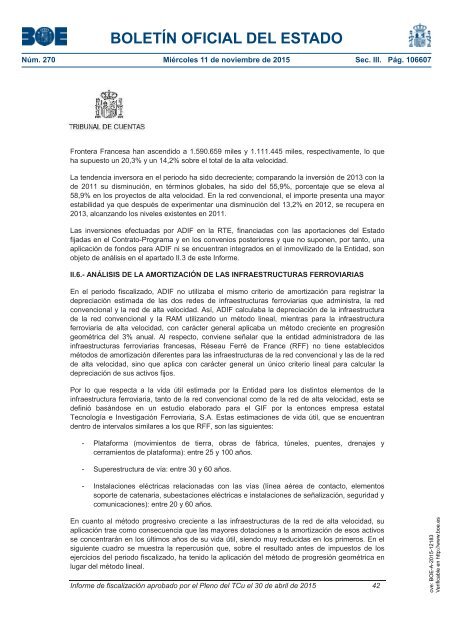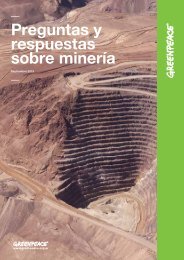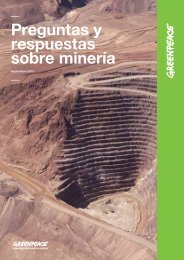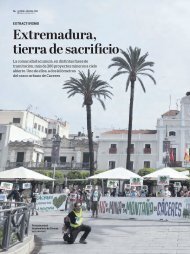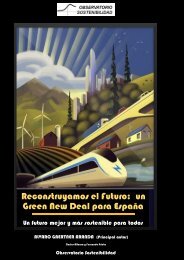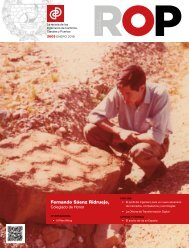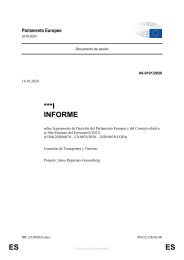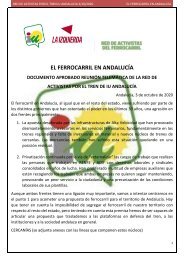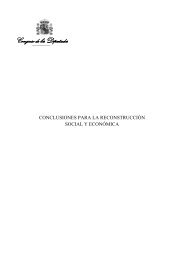Tribunal de Cuentas :Informe fiscalización infraestructuras ferroviarias 2011-2013
RELACIÓN DE ANEXOS ANEXO I BALANCES DE SITUACIÓN 2011, 2012 Y 2013 ANEXO II CUENTA DE PÉRDIDAS Y GANANCIAS DE 2011, 2012 Y 2013 ANEXO III EVOLUCIÓN DE LA SITUACIÓN FINANCIERA DEL PERIODO 2011-2013 ANEXO IV LIQUIDACIONES DEL PRESUPUESTO DE CAPITAL. EJERCICIOS 2011, 2012 Y 2013 ANEXO V COBERTURA DE LA RED DE ALTA VELOCIDAD ANEXO VI COBERTURA DE LA RED CONVENCIONAL ANEXO VII COBERTURA ALTA VELOCIDAD POR LÍNEAS 2013 ANEXO VIII EJECUCIÓN DEL PAP 2011, 2012 Y 2013 ANEXO IX SITUACIÓN DE LA INVERSIÓN DE ADIF-AV EN 2013 ANEXO X EVOLUCIÓN DEL TRÁFICO FERROVIARIO (KM-TREN) DE LAS LÍNEAS DE ADIF-AV cve: BOE-A-2015-12183 Verificable en http://www.boe.es
RELACIÓN DE ANEXOS ANEXO I BALANCES DE SITUACIÓN 2011, 2012 Y 2013 ANEXO II CUENTA DE PÉRDIDAS Y GANANCIAS DE 2011, 2012 Y 2013 ANEXO III EVOLUCIÓN DE LA SITUACIÓN FINANCIERA DEL PERIODO 2011-2013 ANEXO IV LIQUIDACIONES DEL PRESUPUESTO DE CAPITAL. EJERCICIOS 2011, 2012 Y 2013 ANEXO V COBERTURA DE LA RED DE ALTA VELOCIDAD ANEXO VI COBERTURA DE LA RED CONVENCIONAL ANEXO VII COBERTURA ALTA VELOCIDAD POR LÍNEAS 2013 ANEXO VIII EJECUCIÓN DEL PAP 2011, 2012 Y 2013 ANEXO IX SITUACIÓN DE LA INVERSIÓN DE ADIF-AV EN 2013 ANEXO X EVOLUCIÓN DEL TRÁFICO FERROVIARIO (KM-TREN) DE LAS LÍNEAS DE ADIF-AV
cve: BOE-A-2015-12183
Verificable en http://www.boe.es
You also want an ePaper? Increase the reach of your titles
YUMPU automatically turns print PDFs into web optimized ePapers that Google loves.
BOLETÍN OFICIAL DEL ESTADO<br />
Núm. 270 Miércoles 11 <strong>de</strong> noviembre <strong>de</strong> 2015 Sec. III. Pág. 106607<br />
Frontera Francesa han ascendido a 1.590.659 miles y 1.111.445 miles, respectivamente, lo que<br />
ha supuesto un 20,3% y un 14,2% sobre el total <strong>de</strong> la alta velocidad.<br />
La ten<strong>de</strong>ncia inversora en el periodo ha sido <strong>de</strong>creciente; comparando la inversión <strong>de</strong> <strong>2013</strong> con la<br />
<strong>de</strong> <strong>2011</strong> su disminución, en términos globales, ha sido <strong>de</strong>l 55,9%, porcentaje que se eleva al<br />
58,9% en los proyectos <strong>de</strong> alta velocidad. En la red convencional, el importe presenta una mayor<br />
estabilidad ya que <strong>de</strong>spués <strong>de</strong> experimentar una disminución <strong>de</strong>l 13,2% en 2012, se recupera en<br />
<strong>2013</strong>, alcanzando los niveles existentes en <strong>2011</strong>.<br />
Las inversiones efectuadas por ADIF en la RTE, financiadas con las aportaciones <strong>de</strong>l Estado<br />
fijadas en el Contrato-Programa y en los convenios posteriores y que no suponen, por tanto, una<br />
aplicación <strong>de</strong> fondos para ADIF ni se encuentran integrados en el inmovilizado <strong>de</strong> la Entidad, son<br />
objeto <strong>de</strong> análisis en el apartado II.3 <strong>de</strong> este <strong>Informe</strong>.<br />
II.6.- ANÁLISIS DE LA AMORTIZACIÓN DE LAS INFRAESTRUCTURAS FERROVIARIAS<br />
En el periodo fiscalizado, ADIF no utilizaba el mismo criterio <strong>de</strong> amortización para registrar la<br />
<strong>de</strong>preciación estimada <strong>de</strong> las dos re<strong>de</strong>s <strong>de</strong> <strong>infraestructuras</strong> <strong>ferroviarias</strong> que administra, la red<br />
convencional y la red <strong>de</strong> alta velocidad. Así, ADIF calculaba la <strong>de</strong>preciación <strong>de</strong> la infraestructura<br />
<strong>de</strong> la red convencional y la RAM utilizando un método lineal, mientras para la infraestructura<br />
ferroviaria <strong>de</strong> alta velocidad, con carácter general aplicaba un método creciente en progresión<br />
geométrica <strong>de</strong>l 3% anual. Al respecto, conviene señalar que la entidad administradora <strong>de</strong> las<br />
<strong>infraestructuras</strong> <strong>ferroviarias</strong> francesas, Réseau Ferré <strong>de</strong> France (RFF) no tiene establecidos<br />
métodos <strong>de</strong> amortización diferentes para las <strong>infraestructuras</strong> <strong>de</strong> la red convencional y las <strong>de</strong> la red<br />
<strong>de</strong> alta velocidad, sino que aplica con carácter general un único criterio lineal para calcular la<br />
<strong>de</strong>preciación <strong>de</strong> sus activos fijos.<br />
Por lo que respecta a la vida útil estimada por la Entidad para los distintos elementos <strong>de</strong> la<br />
infraestructura ferroviaria, tanto <strong>de</strong> la red convencional como <strong>de</strong> la red <strong>de</strong> alta velocidad, esta se<br />
<strong>de</strong>finió basándose en un estudio elaborado para el GIF por la entonces empresa estatal<br />
Tecnología e Investigación Ferroviaria, S.A. Estas estimaciones <strong>de</strong> vida útil, que se encuentran<br />
<strong>de</strong>ntro <strong>de</strong> intervalos similares a los que RFF, son las siguientes:<br />
- Plataforma (movimientos <strong>de</strong> tierra, obras <strong>de</strong> fábrica, túneles, puentes, drenajes y<br />
cerramientos <strong>de</strong> plataforma): entre 25 y 100 años.<br />
- Superestructura <strong>de</strong> vía: entre 30 y 60 años.<br />
- Instalaciones eléctricas relacionadas con las vías (línea aérea <strong>de</strong> contacto, elementos<br />
soporte <strong>de</strong> catenaria, subestaciones eléctricas e instalaciones <strong>de</strong> señalización, seguridad y<br />
comunicaciones): entre 20 y 60 años.<br />
En cuanto al método progresivo creciente a las <strong>infraestructuras</strong> <strong>de</strong> la red <strong>de</strong> alta velocidad, su<br />
aplicación trae como consecuencia que las mayores dotaciones a la amortización <strong>de</strong> esos activos<br />
se concentrarán en los últimos años <strong>de</strong> su vida útil, siendo muy reducidas en los primeros. En el<br />
siguiente cuadro se muestra la repercusión que, sobre el resultado antes <strong>de</strong> impuestos <strong>de</strong> los<br />
ejercicios <strong>de</strong>l periodo fiscalizado, ha tenido la aplicación <strong>de</strong>l método <strong>de</strong> progresión geométrica en<br />
lugar <strong>de</strong>l método lineal.<br />
<strong>Informe</strong> <strong>de</strong> <strong>fiscalización</strong> aprobado por el Pleno <strong>de</strong>l TCu el 30 <strong>de</strong> abril <strong>de</strong> 2015 42<br />
cve: BOE-A-2015-12183<br />
Verificable en http://www.boe.es


